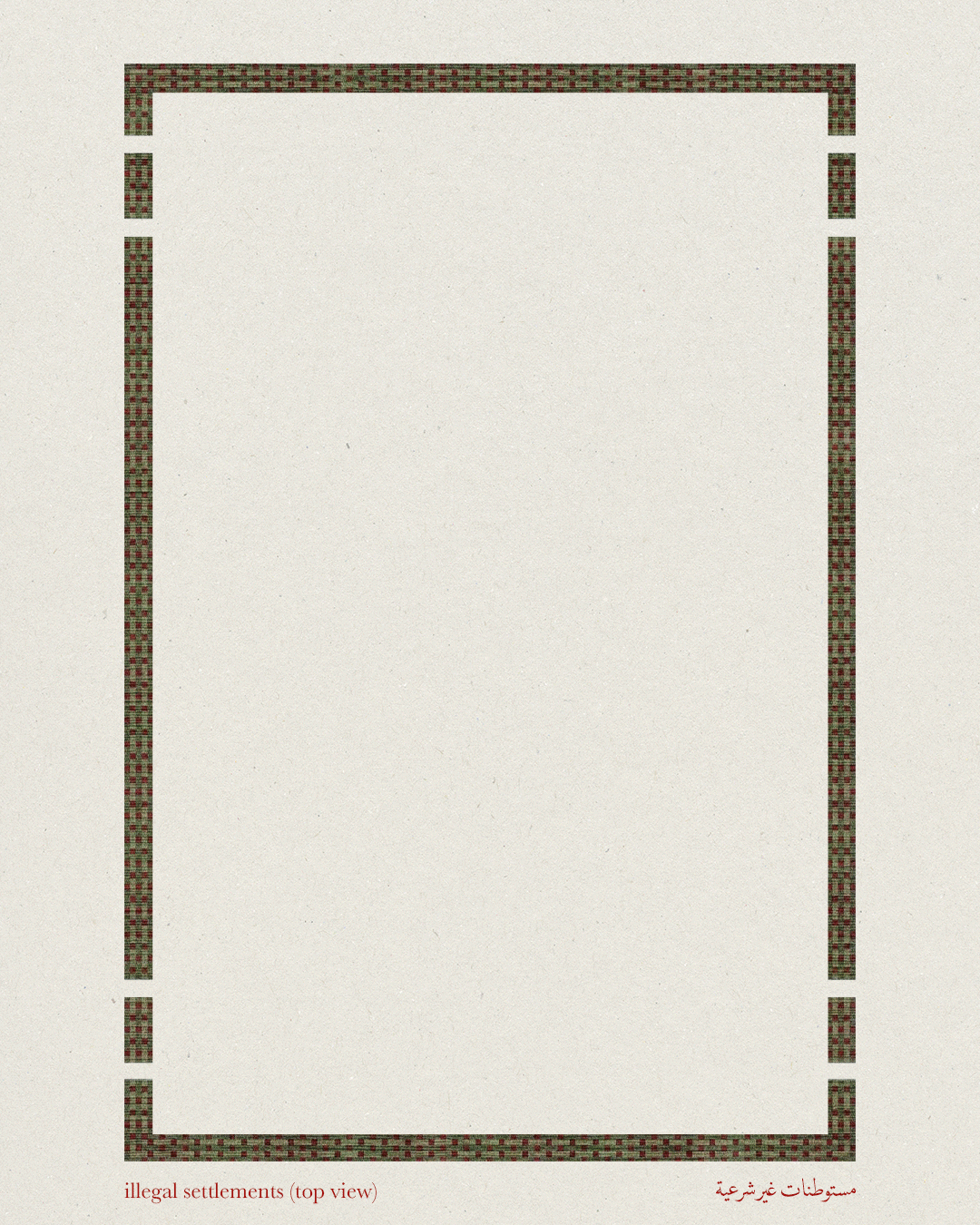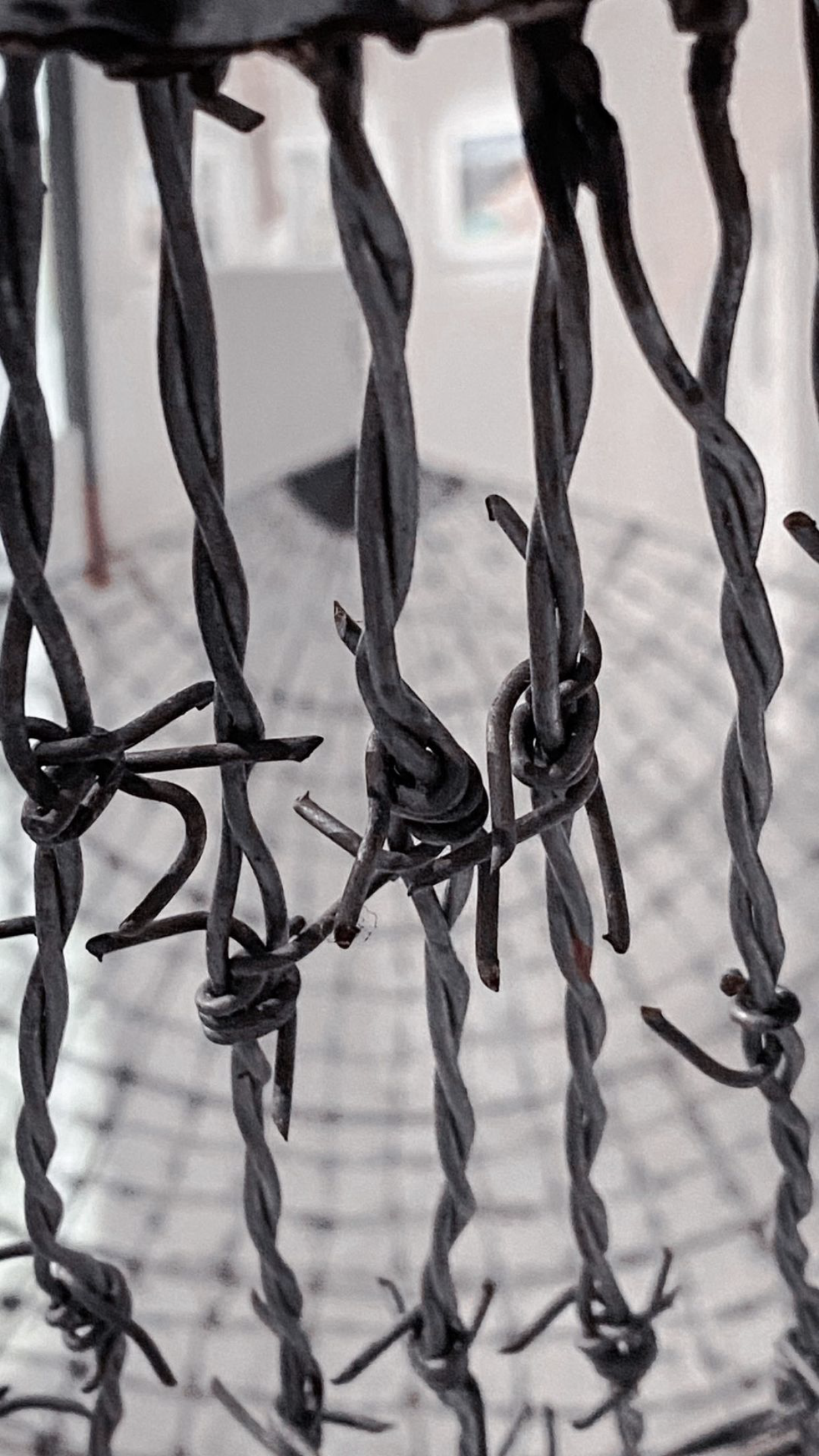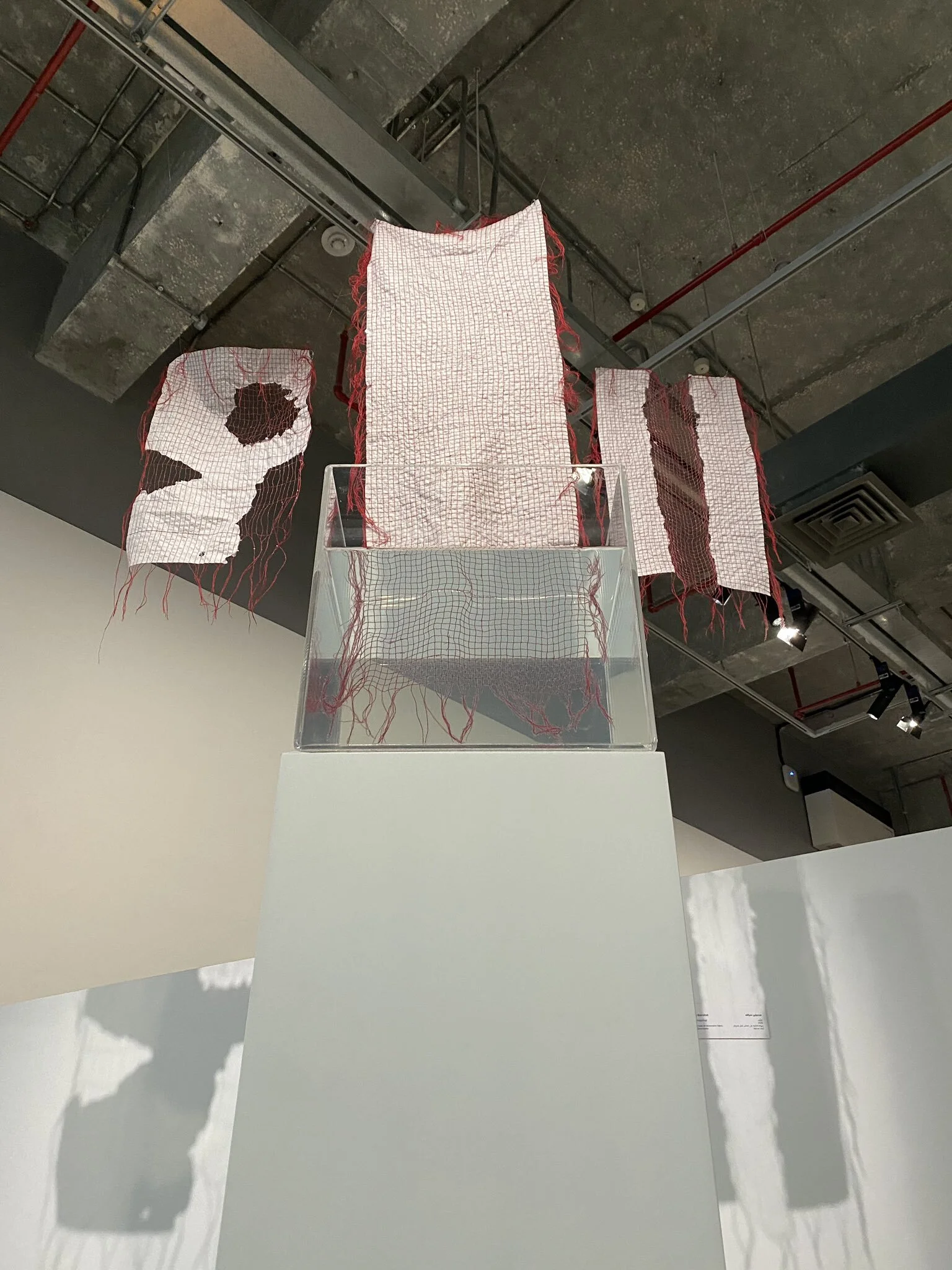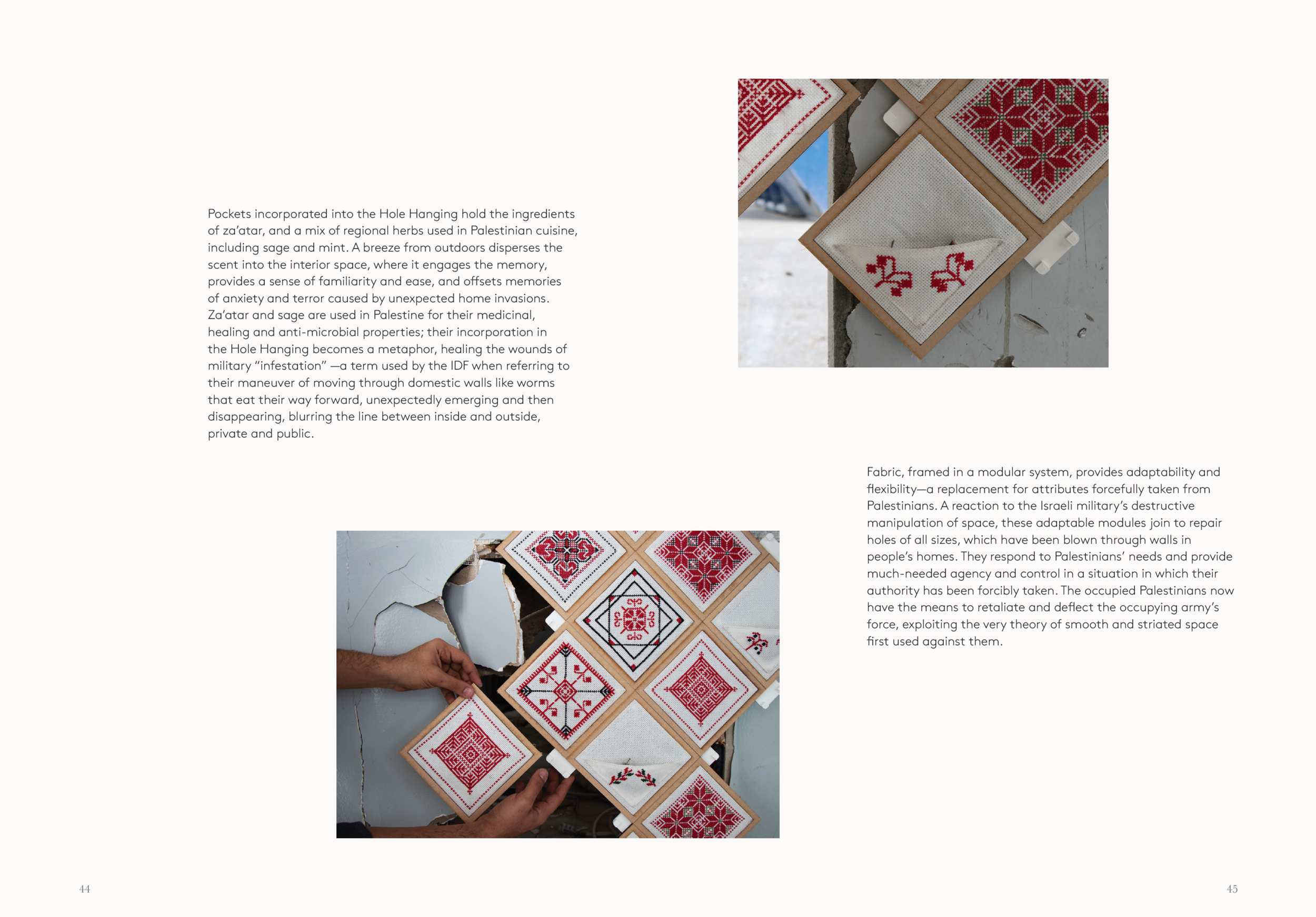Disorient(al) is a handmade rug that reimagines the rich tradition of Palestinian embroidery (tatreez) to reflect the disorientation caused by the architecture of occupation in Palestine. Drawing on the visual language of tatreez, a centuries-old craft that has long served as a symbol of identity and resistance, the rug transforms familiar patterns into a commentary on the impact of militarized architecture in the Palestinian landscape today.
The title of the rug, Disorient(al), plays on the intersection of two ideas: (orientalism), a term that historically refers to the Western exoticization and distortion of Eastern cultures, and (disorientation) which in this context speaks to the physical, emotional, and psychological dislocation experienced by Palestinians under occupation. The rug’s design uses this duality to critique the way architecture has been strategically weaponized to fragment, control, and disorient Palestinian communities.
Rather than traditional floral or geometric motifs, the rug reinterprets patterns to represent the invasive structures of occupation: the stark, oppressive lines of the apartheid wall, the maze-like configurations of checkpoints, the geometric sprawl of illegal settlements, and the broken paths of segregated roads. These motifs are not only visually jarring but are placed in ways that disrupt the natural flow of the design, creating a sense of fragmentation and unease. The viewer’s eye is pulled in multiple, often conflicting directions, mirroring the disorienting and unsettling experience of navigating a landscape where borders and boundaries are constantly shifting, controlled by a foreign power.
The rug’s color palette is similarly charged, blending the earth tones of the landscape with the muted grays of concrete barriers, the cold hues of surveillance, and the stark reds of illegal settlements. There is a deliberate contrast between the warmth of the landscape and the sterile, militarized structrures.
Disorient(al) challenges viewers to consider how architecture, far from being a neutral backdrop, can serve as an instrument of control and dislocation. The rug becomes a metaphor for the constant state of disorientation faced by Palestinians living in a landscape defined by violence, displacement, and restriction. In this work, art becomes both a means of resistance and a call for awareness, urging us to see architecture not just as built space, but as an active force that shapes lives, identities, and histories.

























































